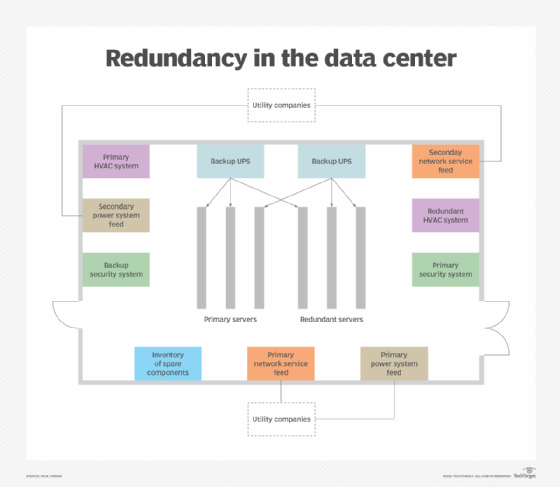How to Deal With Redundancy Pay If Company Goes Bust: Key Information for UK Workers
How to Deal With Redundancy Pay If Company Goes Bust: Key Information for UK Workers
Blog Article
Investigating the Interplay Between Firm Redundancy and Business Flexibility for Future Growth
In the dynamic landscape of today's company globe, the complex partnership between business redundancy and organizational versatility emerges as a crucial factor for sustained development and success. Companies frequently encounter the challenge of striking a fragile equilibrium in between maintaining a level of redundancy to minimize risks and cultivating adaptability to respond swiftly to the ever-evolving market demands.
Relevance of Business Redundancy
Firm redundancy is a crucial aspect that improves business strength and mitigates functional threats. By including redundancy measures within the organizational framework, companies can much better hold up against unpredicted disruptions and fluctuations in the service setting. Redundancy functions as a calculated barrier, enabling business to adapt and react efficiently to unforeseen challenges without endangering important operations.
One key facet of the value of business redundancy is its duty in making sure continuity throughout times of dilemma. When encountered with abrupt modifications or emergencies, repetitive systems, sources, or personnel can tip in to preserve important functions and stop extensive disturbances. This continuity not just safeguards the firm's track record and customer count on yet also minimizes financial losses and operational downtime.

Methods for Organizational Versatility

Creating adaptable business structures that permit for quick changes to market characteristics and consumer requirements is crucial for staying affordable in a rapidly developing environment. By proactively determining possible interruptions and chances, companies can proactively adjust and prosper in an ever-changing business landscape.
Harmonizing Redundancy and Versatility
Achieving an unified equilibrium in between operational redundancy and organizational flexibility is vital in browsing the complexities of a vibrant service atmosphere. Redundancy within a firm supplies a safeguard, ensuring continuity and stability in procedures. However, an excess of redundancy can cause inadequacies and impede adaptability to altering market problems. On the various other hand, organizational adaptability permits firms to respond promptly to external interruptions and seize new chances. Striking the right balance in between redundancy and adaptability is a fragile procedure that requires a deep understanding of the company's objectives, industry dynamics, and risk tolerance.
To accomplish this equilibrium, firms require to perform normal assessments of their procedures to determine areas where redundancy is required for threat reduction and where adaptability can drive innovation and development. Implementing flexible structures, promoting a culture of continuous discovering and enhancement, and urging open communication across all levels of the organization are key strategies to integrate redundancy and adaptability successfully. By straightening these 2 critical components, business can position themselves for sustainable development and success in an ever-changing business landscape.
Case Studies on Adjustment Success
In analyzing instances of effective organizational adjustment, it comes to be evident that the interplay between functional redundancy and versatility is a specifying aspect in forming resistant businesses. One engaging instance study is that of Netflix. Originally a DVD rental solution, Netflix showed remarkable flexibility by transitioning right into a streaming platform when digitalization you could try here interfered with the sector. By tactically purchasing technology and web content production, Netflix not only made it through but grew in a swiftly progressing market. Another standout instance is Amazon. Starting as an online bookstore, Amazon constantly adjusted its organization version, expanding right into diverse fields such as cloud computer and expert system. This adaptability permitted Amazon to stay ahead of competitors and fulfill transforming customer demands. Finally, Adobe provides a notable illustration of effective adjustment. The company moved from marketing software licenses to a subscription-based design, making certain repeating profits streams and improved consumer involvement. These case research studies highlight the importance of functional redundancy coupled with organizational adaptability in cultivating lasting growth and competition.
Building Strength for Future Development
Structure resilience for future growth calls for a critical placement of operational procedures with market characteristics and our website arising trends. Firms have to adjust to changing atmospheres by fostering a culture of adaptability, innovation, and continuous renovation. Resilience involves not only recuperating from obstacles but additionally proactively preparing for future obstacles. One crucial facet of structure strength is spending in robust threat monitoring techniques to reduce potential disruptions. This consists of situation preparation, branching out supply chains, and developing contingency strategies for different backups (who pays redundancy money).
Additionally, cultivating solid relationships with stakeholders, such as clients, employees, vendors, and the neighborhood, is essential for weathering uncertainties and keeping depend on and support throughout stormy times. Reliable communication and additional info openness play an important function in structure strength, as they aid align assumptions and facilitate cooperation in navigating uncertainties.
Moreover, organizations require to focus on knowing and advancement efforts to upskill staff members and equip them with the needed devices to adjust to altering situations. By buying their workforce, business can improve their versatility and dexterity, eventually reinforcing their durability for lasting future growth.
Conclusion

In the dynamic landscape of today's company world, the intricate partnership between business redundancy and organizational adaptability emerges as an important factor for continual development and success. Companies often face the difficulty of striking a fragile balance between keeping a degree of redundancy to mitigate risks and cultivating versatility to respond swiftly to the ever-evolving market demands.To attain this equilibrium, firms need to conduct regular assessments of their procedures to identify locations where redundancy is required for danger reduction and where flexibility can drive innovation and growth.In verdict, the interaction in between business redundancy and organizational versatility is essential for future growth. Building durability through a combination of redundancy and adaptability will certainly make sure that companies are prepared for the challenges of the future.
Report this page